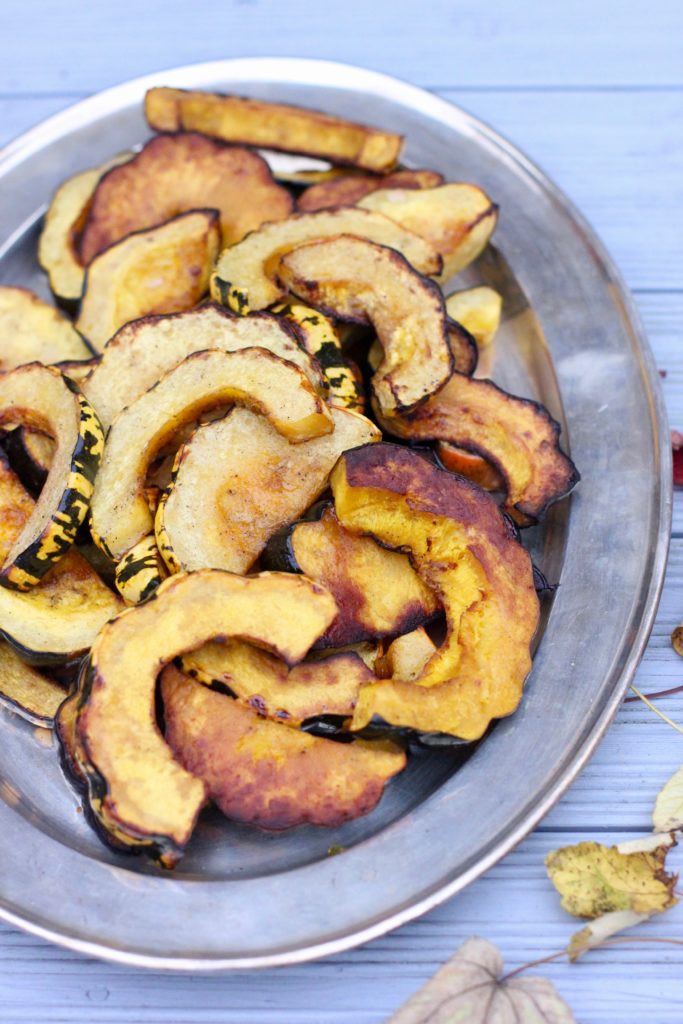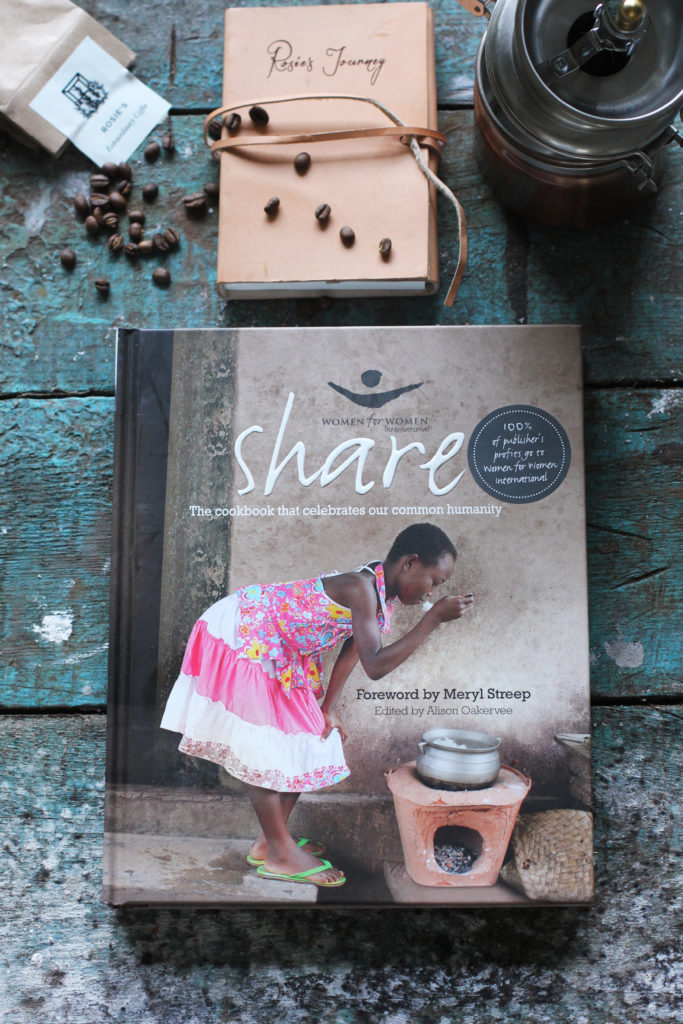
*This post is part of a sponsored collaboration with Taylors of Harrogate and Creating For Good*
Pull up a pew, grab a cup of coffee, and settle in, because if you’re reading this blog, the chances are you are as interested in food and drink as I am, and you’ll be curious to find out what happened when one of this country’s most respected tea and coffee producers (Taylors of Harrogate) gathered some of Instagram’s most inquisitive and creative women to give them a fast-track in speciality coffee and a crash-course in flavour.
The brilliant thing about the world of food and drink is that you just never, ever stop learning. What we eat and drink, why and how is such a vast, all-encompassing subject that it would take several lifetimes to know it all, and that’s one of the things I love most about it. The possibilities are endless.
Every day I feel like I learn something new, and while I try and retain as much as possible, it’s often a case of relearning, and reminding yourself of things you learned before. Such was the case a few weeks ago when I went back to cookery school for the second of our Taylors of Harrogate x Creating For Good workshops, which this time was all about coffee and the many different flavours found in it.
Coffee and cooking at Saturday Kitchen HQ
While our introduction to our Extraordinary Journeys took us to Harrogate, this time we were London-based, and met at the Cactus TV Michel Roux Jr Cookery School (above where I’d filmed Saturday Kitchen a few weeks before – you can see that here if you missed it). We started with coffee and cake, courtesy of Creating For Good and Mondomulia’s Guila Mule, while Taylors coffee expert Jamie Ball talked us through the way that speciality coffee is graded, and how its many different attributes have to be scored in order to find an effective way of communicating its flavours.
What was amazing to learn was that all of Taylors’ coffees are speciality-grade, which means that they’ve all scored higher than 80 points on the industry standard SCAA (Speciality Coffee Association Of America) scale. I knew that the coffee I often buy from small-scale roasters around London was speciality-grade, but I hadn’t realised that all of Taylor’s coffees – which are widely available in the supermarkets and really well priced – are. For coffee geeks like me who might often find themselves caught short without a good bag of coffee, this is good to know!
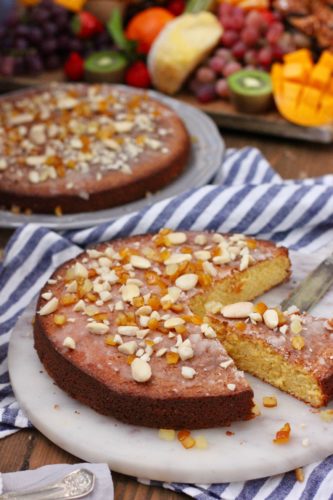
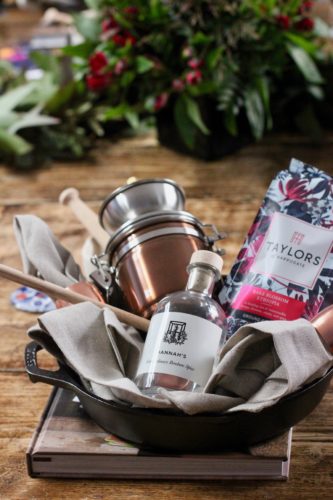
Some geeky coffee facts for you
Given the seasonal, rapidly deteriorating nature of the product, there are many stages in the production chain that have to be right to create an exceptional bag of coffee. I’m a bit of a dweeb when it comes to these sorts of things, and was interested to learn that they seal their bags of coffee with less than 1% of oxygen in there (the atmosphere has around 20%), in order to keep it as fresh as possible. I can’t be alone in genuinely looking forward to deeply inhaling into a freshly-opened bag of coffee, can I? Is it sad to say that is genuinely a highlight of my week??
Amazingly, coffee has around 1000 volatile and non-volatile aromas (that’s more than wine, folks), and it’s important for producers like Taylors to find a common language to use in order to make those flavours relatable to us avid coffee drinkers. So while I love the floral, berry brew from Ethiopian coffee beans, you might prefer the nutty praline notes of a Brazilian blend etc. The differences in flavour come down to similar factors as they do in wine. Some of these include:
– the ‘terroir’ – or soil/climate the coffee plants are grown in, how much rain or sun the plant receives, the PH of the soil
– the varietal of coffee bean – like wine with its chardonnay or gamay grapes, there are hundreds differing coffee varietals, each with their different characteristics and varying aromas/body/ acidity etc
– the way the coffee is grown and cultivated – farmers have different ways of doing things and these can impact the coffee (it is a fruit, after all)
– how it is processed – there are loads of different ways coffee is processed, from being left ‘natural’ – with the fruit in tact (the coffee bean is the seed of the coffee berry) to dry and ferment naturally, to the ‘wet’ method whereby the seed is separated from the fruit skin and pulp and processed
– how it is roasted – this has a MASSIVE impact on flavour. Even beans from the same bag of coffee, from the same harvest and coffee farm can taste totally different, depending on how they are roasted – how hot and long the roast
Ball showed us the SCAA flavour wheel – and we sniffed scented oils that reflected some of the notes present in different coffees, from pipe tobacco to clove, maple syrup, grapefruit, pea pods or coconut. A cupping session followed, whereby we slurped and evaluated some of the different origin coffees from Taylors, and then compared our preferences, before Ball revealed that he was planning on freshly roasting our preferred beans for us to take home and grind with little take away hand grinders. This was his way of showing us how important the roasting technique is and so we could experience the ultimate in freshly-roasted, freshly-ground speciality coffee. I feel like one lucky caffeine nut right now…
A creative collab with some brilliant women
Once full of cake, caffeine and coffee facts, it was time for us to make our way upstairs into the eaves of the building for a coffee-inspired cookery lesson with Jessica Bride, one of the incredible women behind Creating For Good. Jessica is a New Orleans native, and good food is in her blood. She’s a fantastic cook and food blogger, and the Art Editor of @London – so a lady with many exciting strings to her bow, who’s just as at home giving a lecture on master storytellers as she is leading a cookery lesson, or reporting on the latest London gallery opening.
One of the most exciting things so far about this collaboration is the fact I’ve met so many inspiring, versatile and creative women, from Sara Tasker (whose Hashtag Authentic podcast is addictive listening for any online creatives), to Laura of Circle of Pines – an utterly beautiful seasonal blog I’ve since become obsessed with, and which ticks all the boxes for me and my Seasonal_Stories Instagram in particular. Then there’s Dom and Carolyn from All That Is She and The Slow Traveler, both of whom push the creative boundaries with their gorgeous, imaginative blogs and feeds; and Hannah Argyle and Jo Yee – Argyle’s photography is captivating and magical, while Yee’s cinemagraphs transport you to a different time and place entirely.
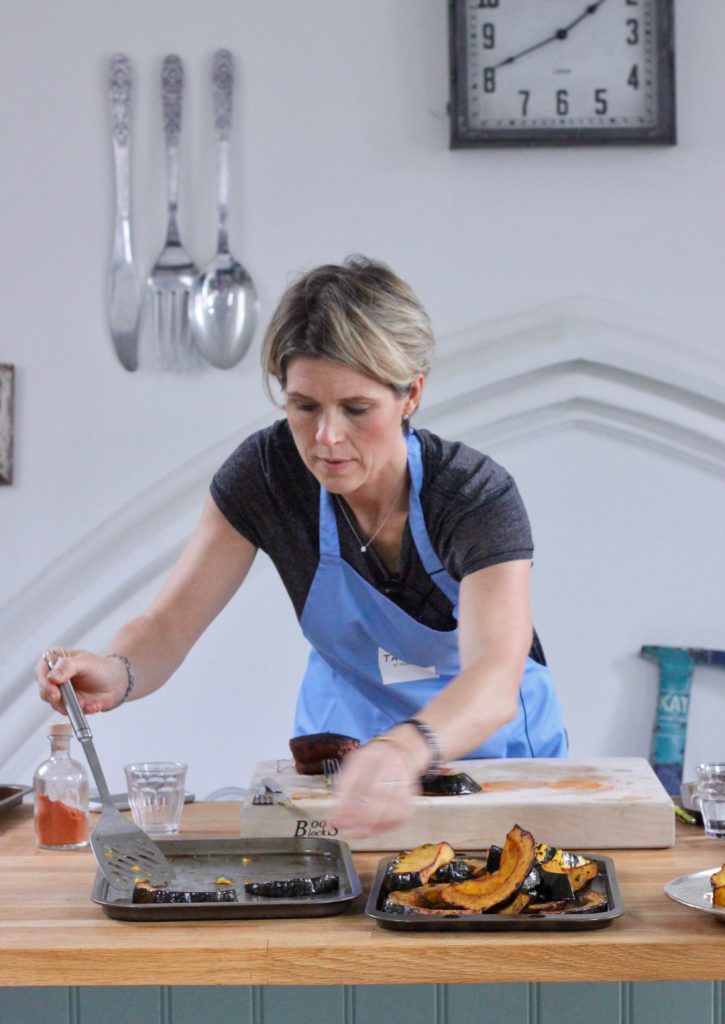
Cooking up a storm of flavour
Back to Bride, who had cleverly curated a cookery course of three dishes that took their inspiration from the flavours and aromas of coffee, and the first thing we whipped up was a personalised jar of Berbere – the smoky Ethiopian spice blend which includes lots of chilli powder, cumin, coriander and clove. We used it to coat some wonderful beef fillet that we then seared in smoking hot skillets, which – when they all simultaneously came into contact with the chilli powder, rather fumigated the cookery school – much to our great amusement.
Bride’s background in steakhouses made for some fantastic insider steak tips such as searing the meat all over ahead of time and then resting it until finishing it off in the oven according to the done-ness preference of your guest. We cooked up some beautiful roast acorn squash to go with it, and Mule demonstrated a delicious Ottolenghi lentil salad from the fantastic Women For Women cookbook ‘Share’ (pictured above) which includes some really lovely recipes not just from leading chefs but from women who have survived living in war-torn countries and who have benefitted first-hand from the brilliant work that Women for Women do.
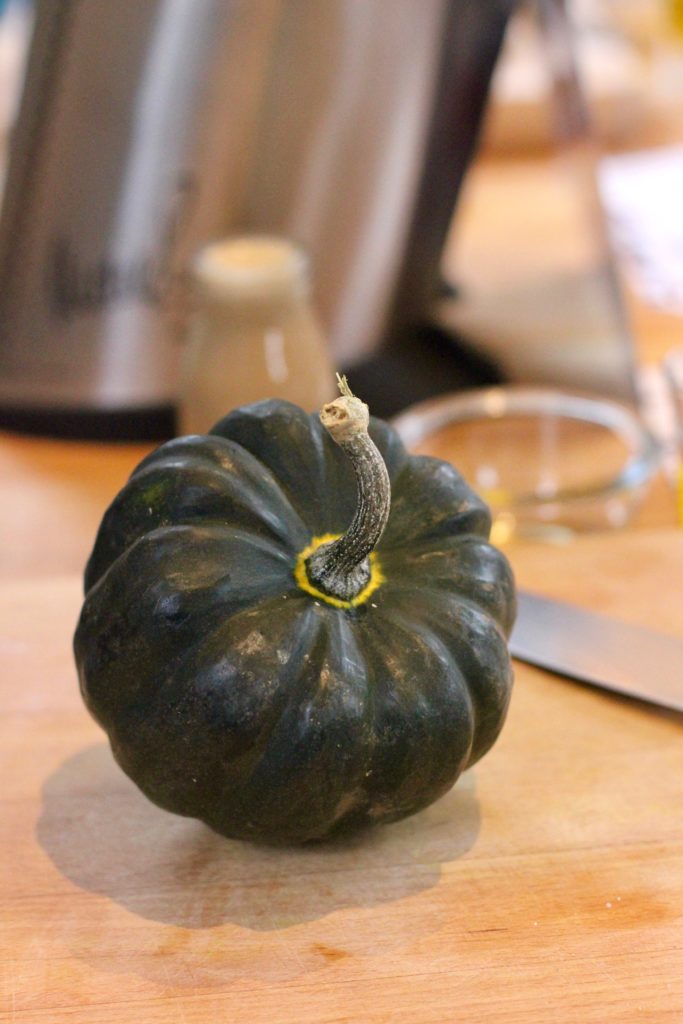
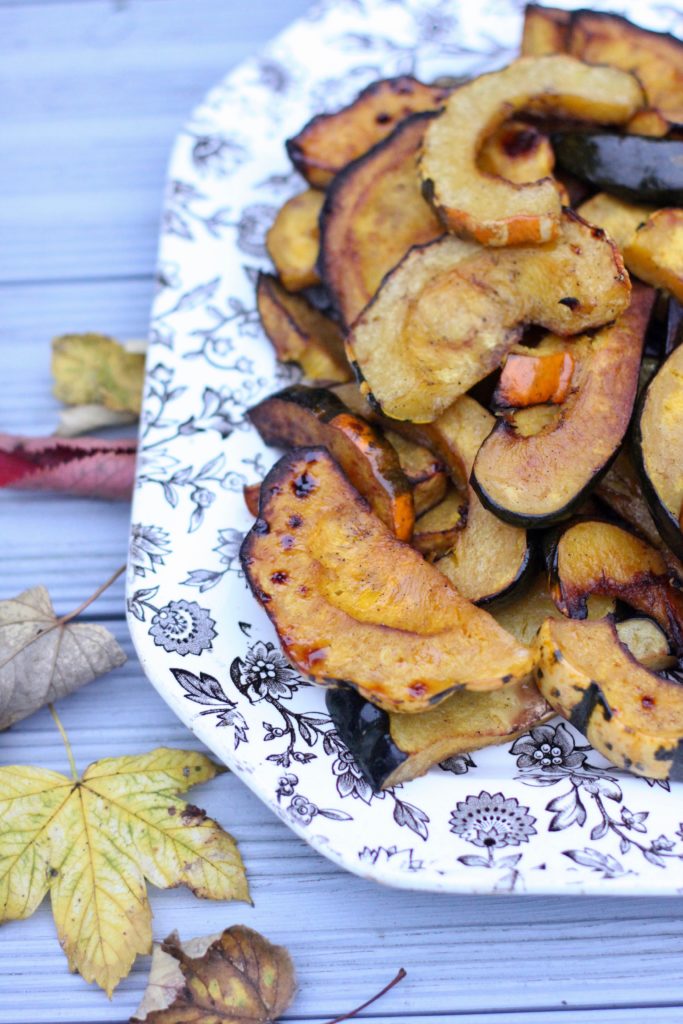
For dessert, we created vanilla souffles along with some absolutely delicious espresso-laced creme anglaise – something you guys know I love to make, remember the foraged meadowsweet one I did for my last Carousel with those crab apple doughnuts?
After cooking up a storm we had the luxury of sitting around the large table downstairs and enjoying our handiwork, passing around huge platters of the Berbere-spiced beef and sweet, creamy roasted squash. I took home my Berbere spice and have been using it in so many different ways, from blitzing with some butter and stuffing under chicken skin, to dusting over poached eggs. It’s a really lovely blend and one I would certainly recommend mixing up yourself as you can customise it according to your own preference. Have any of you guys used the spice blend before? Or cooked with coffee? I’d love to hear about some of your recipes if so. So all in, a rather productive and nourishing second workshop, and I’m really very excited about what’s in store for us next year. Our next session is in April, and at the moment we know nothing, so stay tuned for more…
A LOT ON HER PLATE GIVEAWAY
In the spirit of the title of the Share cookbook mentioned above, I would like to give one away to one of you lucky readers. All you have to do is send an email to me at rosiebirkett1@hotmail.com with the title “Share Cookbook Competition” and answer the following question:
Which style of coffee do I most enjoy?
I will pick the competition winner from a hat full of entrants. Did I mention it has a foreword by one Meryl Streep!? Good luck!
